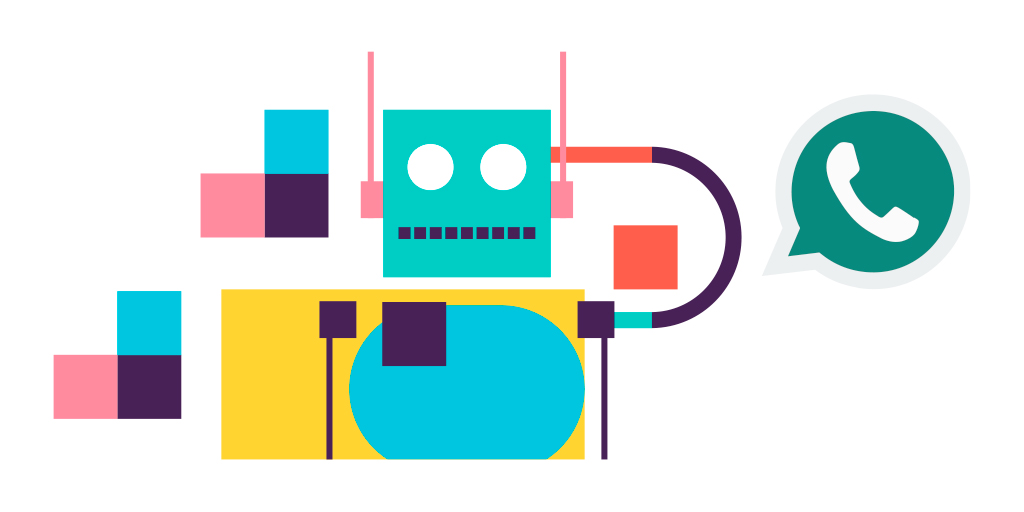Automate the Right Queries - The Key to Effective Chatbots - WhatsBotAI
Learn the essentials of creating effective chatbots by automating the right queries. Discover the importance of coordinated work between AI and customer service teams.

Automate the Right Queries - The Key to Effective Chatbots
Once the decision to implement a chatbot is made, the question arises: which cases will it solve?
Attempting to make a chatbot solve all your customers' queries is not just a daunting task; it's a mistake.
When deciding which inquiries should be automated and which ones shouldn't, we must consider what the customer is looking for and what we promised to provide. Sometimes, it's a quick answer, and a bot is the best option. Sometimes we promise a detailed analysis of a case, and a chatbot is no longer as effective.
What Makes an Effective Chatbot (and What Doesn't)?
Before thinking about which queries to automate and which ones not to, let's review some of the challenges related to the proper use of artificial intelligence in customer service. A good chatbot is one that fulfills fundamental attributes, such as:
Has a Purpose
An effective chatbot clearly knows its purpose. Since it can't handle all customer queries or problems, during its design, it is taken as a starting point for what it will work on (and what it won't). This way, you can efficiently respond to the specified queries and identify those it can't answer, redirecting them properly.
Not Hidden from Customers
"Hello, I'm your virtual assistant. I can help you with all of this..."
A bot designed to satisfy its users explicitly introduces itself, states why it exists, and how it can help.
Making the bot's nature transparent, far from causing a scripted or "robotic" exchange, is a way of informing the user that the company has designed an artificial intelligence system to quickly solve certain common issues.
Knows When to Step Aside
For customers, chatbot support should not mean entering a dead-end maze. Faced with complex requests it can't handle—like analyzing a rare case—the system should offer a quick referral to a human assistant or another communication channel so the customer's concern can be addressed.
Question to Answer
A chatbot is excellent for obtaining information from a customer or generating and categorizing a lead, but if it only does that, the user experience is frustrating and negative. It's essential to justify why the information is requested and then provide value.
Customers Don't Always Want to Chat
There's a misconception that customers always prefer to be served by human assistants, even when trying to solve simple issues like forgetting their password or changing a delivery address.
On the contrary, when evaluating a brand's service quality, most consumers prefer automated resolution to human interaction.
If a chatbot provides agile solutions and is designed to offer a good user experience, it's an excellent option for generating satisfied customers.
Chatbots or virtual assistants work exceptionally well for solving simple and repetitive issues, providing personalized information, managing orders or customer details, and recording user information like screenshots, photo submissions, or audio recordings detailing an incident.
When Robots Come In
When integrating virtual assistants, companies typically delegate processes such as:
-
Registration
-
Updating personal data
-
Receiving and managing requests
-
Service quotations
-
Basic product or store information
-
Sending information or documents
Instead, they prefer to leave the following cases in the hands of personalized service:
-
Resolution of complex issues.
-
Specific product or service advice.
-
Post-sales service.
-
Information exchange in sensitive or stressful moments.
These categories may vary in different contexts, depending on the chatbot technology and the company's communication and marketing strategy.
Coordinated Work
When defining which queries to automate and which ones not to, the best strategy is to design the bot while considering its interaction with personalized service agents.
Ideally, technology should be responsible for producing quick, precise, and agile responses when needed, while people can handle requests that require complex reasoning, detailed analysis, or empathy and a personalized touch.
In summary, the key is for the customer service team and artificial intelligence robots to work together in a coordinated manner to improve results and generate satisfied customers.
